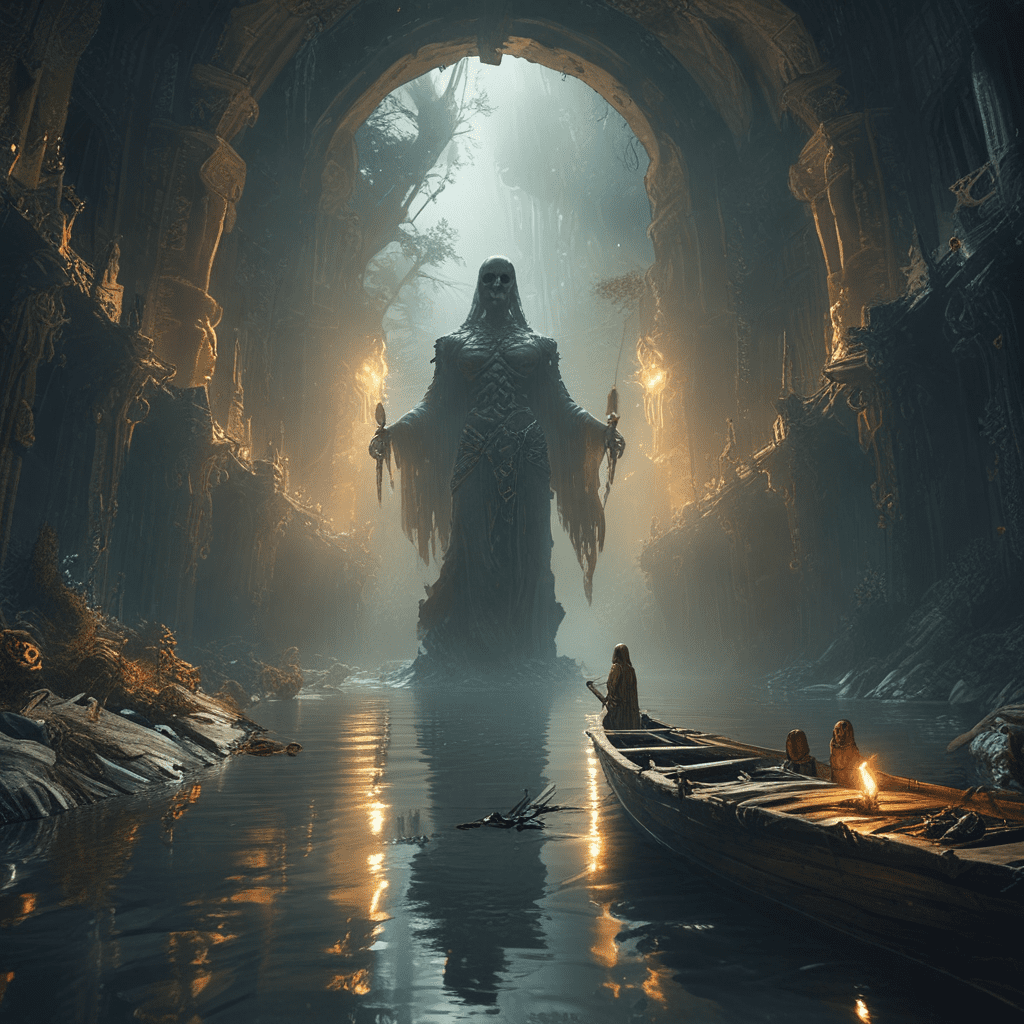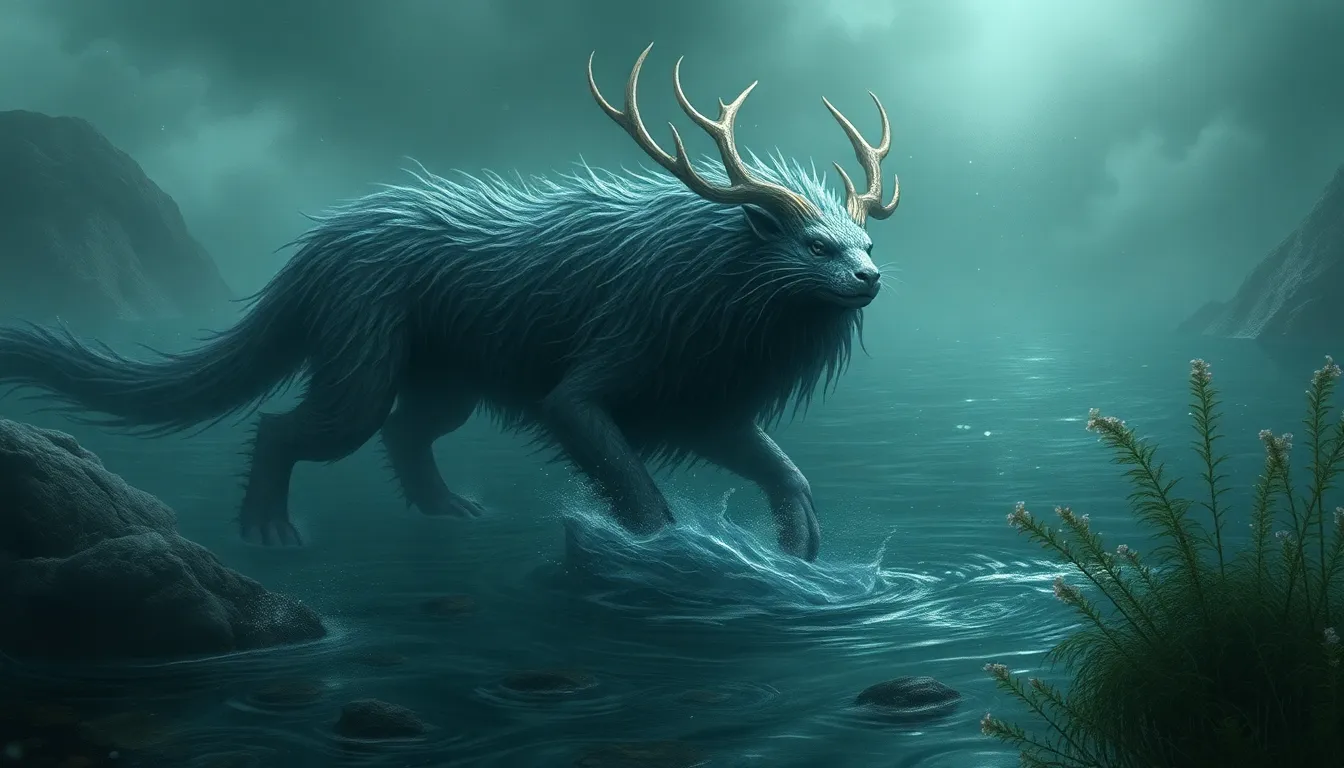The Myth of the Underworld River: Journey to the Realm of the Dead
Introduction
Across various cultures and throughout history, the concept of the Underworld has captivated human imagination, serving as a realm beyond the mortal world where the spirits of the deceased reside. This shadowy domain, often depicted as a hidden subterranean realm or an island across a vast body of water, has served as a source of both fear and fascination. Within these myths, the Underworld River emerges as a recurring motif, acting as a symbolic and literal boundary between the living and the dead.
This article delves into the captivating world of the Underworld River, exploring its diverse representations in various mythologies and its role as a symbolic gateway to the realm of the dead. From the River Styx in Greek Mythology to the River Gjöll in Norse Mythology, we will explore the unique characteristics and symbolic interpretations of these subterranean waterways. Additionally, we will delve into the perilous journeys undertaken by legendary heroes and deities as they navigate the treacherous waters of the Underworld River on their quests to the afterlife. Finally, we will examine various interpretations of the Underworld River myth, including psychological, mythological, and cultural perspectives, shedding light on its enduring significance in human understanding of death and the afterlife.
The Underworld: A Realm of Mystery
The Underworld, also known as the Land of the Dead, has held a prominent place in human imagination across diverse cultures and throughout history. This subterranean realm, often shrouded in darkness and mystery, is believed to be the abode of the departed, where spirits dwell after they have transitioned from the mortal world. Descriptions and beliefs surrounding the Underworld vary widely across different cultures. In some myths, it is depicted as a bleak and desolate wasteland, while in others it is portrayed as a more pleasant realm where souls find peace and rest. Regardless of its specific characteristics, the Underworld has consistently served as a symbol of the unknown, a realm beyond the boundaries of human experience and understanding.
The concept of the Underworld is often intertwined with beliefs about death, the afterlife, and the fate of the soul. In many cultures, the journey to the Underworld is seen as a significant event, marking a person's transition from the physical world to the spiritual realm. This journey is often fraught with challenges and obstacles, as the soul navigates treacherous paths and encounters various supernatural beings. The Underworld River, with its symbolic representation of the boundary between life and death, plays a crucial role in facilitating this transition and guiding souls on their final journey.
The Underworld River: A Universal Motif
The Underworld River is a recurring motif found in numerous mythologies worldwide, highlighting its significance as a symbolic representation of the boundary between the living and the dead. These subterranean waterways serve as both physical and symbolic obstacles that must be overcome to access the realm of the deceased. In some myths, the river is believed to be infested with dangerous creatures or guarded by fearsome deities, symbolizing the challenges and perils associated with death and the transition to the afterlife.
Exploring the various representations of the Underworld River in different mythologies provides insights into diverse cultural beliefs about death, the afterlife, and the journey of the soul. By comparing and contrasting the characteristics and symbolism of the river across different cultures, we gain a deeper understanding of the universal human fascination with the unknown and the enduring power of myth in shaping our understanding of life, death, and the human condition.
Mythology of the Underworld River
Greek Mythology: The River Styx
In Greek mythology, the Underworld River Styx holds immense significance as the boundary between the world of the living and the realm of the dead. This formidable river, encircling the Underworld nine times, is said to be formed from the tears of the Titan Styx. Its waters possess the unique property of inflicting instant death upon any mortal who touches them. The River Styx also serves as a barrier, preventing the spirits of the dead from returning to the land of the living.
Charon, the ferryman of Hades, plays a pivotal role in transporting the souls of the deceased across the River Styx. According to myth, only those who have been properly buried and possess an obol, a coin placed in their mouth to pay Charon, are granted passage. Those who cannot afford passage are doomed to wander the shores of the river for a hundred years.
The River Styx is not only a physical barrier but also a potent symbol in Greek mythology. It represents the finality of death and the irreversible journey from the realm of the living to the realm of the dead. Its formidable nature and association with death have made it a prominent and enduring feature in Greek mythology.
Egyptian Mythology: The River of the Netherworld
In Egyptian mythology, the River of the Netherworld, also known as the 'Water of Nun,' plays a crucial role in the afterlife journey. This vast celestial body was believed to be the source of all creation and the destination of the deceased after their mortal life.
The Egyptians believed that the deceased would embark on a perilous journey through the Underworld, navigating through various obstacles and facing judgment before reaching the final resting place in the Field of Reeds. The River of the Netherworld served as a means of transportation for the souls as they journeyed through the treacherous Underworld.
The Egyptians associated the River of the Netherworld with the concept of rebirth and renewal. Its waters were believed to possess the power to cleanse and purify the souls, preparing them for their transformation into the afterlife. The River of the Netherworld played a vital role in the Egyptian belief system, symbolizing the cyclical nature of life, death, and rebirth.
Norse Mythology: The River Gjöll
In Norse mythology, the River Gjöll holds a significant place in the underworld realm of Hel. Located in the realm of Niflheim, the River Gjöll, formed from the tears of the goddess Hel, serves as the boundary between the land of the living and the land of the dead.
The River Gjöll is described as a dark and treacherous waterway, guarded by the giantess Modgud. According to legend, all those who die of old age or sickness must cross the icy waters of the Gjöll to reach Hel. The bridge over the river, known as the Gjallarbrú, is said to be constructed from glittering gold and guarded by the rooster Gullinkambi.
The River Gjöll symbolizes the finality of death and the irreversible journey to the underworld. Its association with the goddess Hel and its location in the desolate realm of Niflheim reinforce its role as a formidable barrier separating the living from the dead in Norse mythology.
The Journey to the Realm of the Dead
The River as a Transition from Life to Death
The Underworld River serves as a potent symbol of the transition from life to death in various mythologies. Crossing the river represents the irreversible journey from the realm of the living to the realm of the dead. The dangers and challenges associated with crossing the river often symbolize the struggles and uncertainties that accompany death and the afterlife.
In Greek mythology, the River Styx marks the final separation between the living and the dead. The requirement of Charon's passage and the inability of those without proper burial to cross the river emphasize the finality of death and the importance of adhering to proper rituals and beliefs.
Similarly, in Egyptian mythology, the River of the Netherworld represents the transformation from mortal life to the afterlife. The journey across the river is fraught with perils, symbolizing the challenges and uncertainties that the soul faces in the Underworld.
The River Gjöll in Norse mythology also signifies the irreversible transition to the realm of Hel. Crossing the icy waters and facing the guardian Modgud represent the challenges and obstacles that must be overcome on the journey to the afterlife.
Ultimately, the Underworld River symbolizes the ultimate boundary between life and death, serving as a reminder of the finite nature of human existence and the inevitable journey to the unknown realm beyond.
Theories and Interpretations
Psychological Interpretations: The River as a Symbol of the Subconscious Mind
From a psychological perspective, the Underworld River can be interpreted as a symbol of the subconscious mind. The journey across the river represents the exploration of the hidden depths of the unconscious, where repressed thoughts, emotions, and memories reside.


